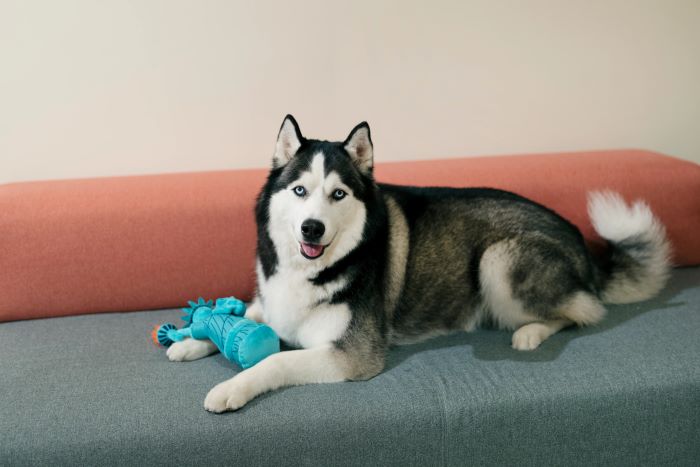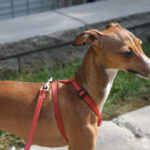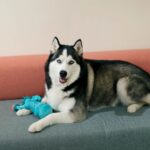Huskies are beautiful, energetic dogs that can make wonderful pets. However, their high activity levels and stubborn nature can make them a challenge to train. As the owner of a hyperactive Husky, you may feel frustrated at times trying to curb your pet’s exuberance and teach good manners. But with patience, consistency, and the right approach, you can transform an unruly Husky into a well-behaved companion. In this article we talk about How to Train a Hyperactive Husky-Tips for a Well-Behaved Pet.
In this blog post, we’ll cover tips and strategies for training a hyperactive Husky, including:
- Understanding the Husky temperament
- Setting up the right environment
- Establishing a routine
- Using positive reinforcement
- Trying brain games and food puzzles
- Getting plenty of exercise
- Working on impulse control
- Troubleshooting common issues
Follow these guidelines, and you’ll be well on your way to a better-mannered pet Husky who’s a joy to live with.
Table of Contents
Understanding the Husky Temperament
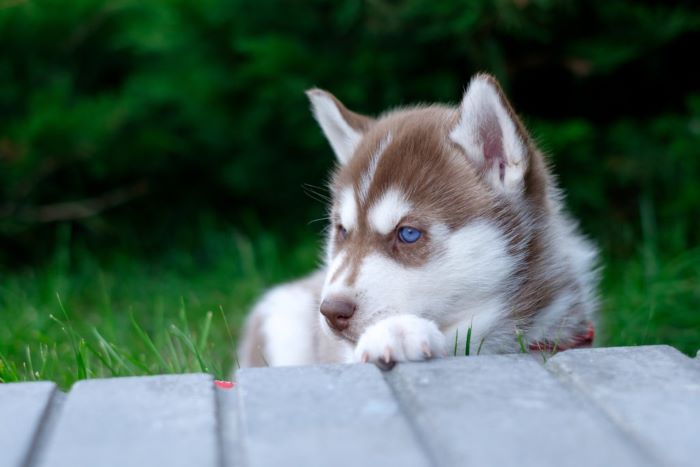
The first step is understanding what makes Huskies tick. Originally bred to pull sleds over long distances, Huskies have almost boundless energy reserves. They are independent, wilful, and easily bored. Without adequate physical and mental stimulation, all that energy gets channeled into destructive or hyperactive behaviour like chewing, digging, excess barking, and running off.
As a Husky owner, your job is providing appropriate outlets for your dog’s energy. This starts with setting up an enrichment plan covering exercise, play, training, and rest. Stick to the plan consistently, while working on impulse control and manners using positive reinforcement techniques suited for this smart but stubborn breed. With time and effort, you can shape more calm, focused behaviour.
Setting Up the Right Environment
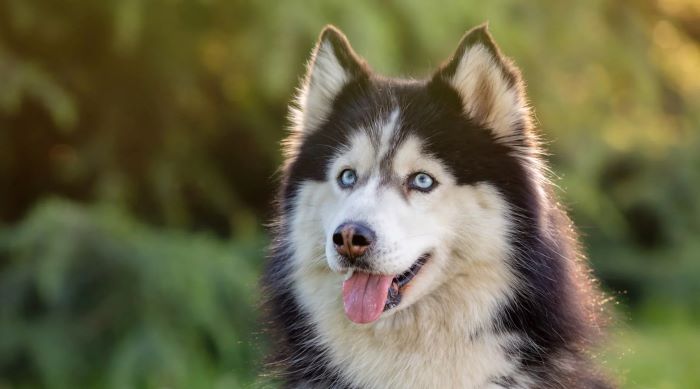
Since Huskies were bred to live and work outside, they thrive with access to a yard where they can run around. If possible, install a tall, Husky-proof fence and dog door giving access to a safe outdoor area when you’re not home. This will let your pooch burn off some steam.
Inside, dog-proof your home by removing tempting chewing and digging targets. Provide interactive puzzle toys the dog can manipulate with their paws and mouth for mental stimulation. Make sure your Husky gets plenty of affection and playtime with you as well. Set a consistent daily routine with regular mealtimes, walks, training sessions, and opportunities to run. This will help avoid boredom leading to destructive behaviour.
Establishing a Routine
Hyperactive Huskies do best when every day follows a predictable routine addressing their physical and mental needs. Aim to walk your Husky for 45-60 minutes daily, plus provide at least 30 minutes of active play or training. Puzzles and chew toys can supplement this to tire out your dog’s brain.
Equally important is building in forced rest. Crate train your Husky or tether them to you with a leash so they can’t wander off. Enforce naps throughout the day to teach your pooch it’s okay to settle down. This combination of activity and downtime works wonders to curb hyperactivity.
Use Positive Reinforcement
The key to successfully training a headstrong Husky is positive reinforcement. This means rewarding desired behaviour with treats, praise, play and attention, while ignoring unwanted behaviour. For example, when your Husky stops pulling on leash and walks nicely next to you, say “Good walk!” and give a treat. Any time they jump or get the zoomies inside, turn away and refrain from eye contact.
Start training in short 5-10 minute sessions to keep your pup engaged. Train before walks or playtime so your Husky sees good behaviour as the ticket to fun rewards. Be patient – it can take hundreds of repetitions before a Husky reliably performs commands. But ultimately, positive methods are the most effective and humane way to deal with this challenging breed.
Try Brain Games and Food Puzzles
In addition to physical exercise, a hyper Husky needs lots of mental stimulation to stay out of trouble. Boredom is often at the root of undesirable behaviours like digging, barking, chewing, aggression, and running off. Engage your dog’s brain through interactive play, obedience and trick training, scent work, and puzzles.
Food puzzle toys are especially useful for high-energy dogs as they must manipulate the toy to earn kibble. Options include Kongs, snuffle mats, treat balls, puzzle boxes, and more. Start with easy puzzles to avoid frustration and upgrade as your dog catches on. You can also hide treats around the house and yard for your pooch to seek out. These brain games will stimulate and relax your hyper Husky.
Get Plenty of Exercise
As established already, Huskies were born to run! Aim for a minimum of 60-90 minutes of heart-pumping activity daily. This could include jogging, hiking, swimming, playing fetch, bikejoring (having your Husky pull you on a bike), or letting them run alongside an ATV. Off-leash exercise should only happen in a fenced area since Huskies have high prey drive and are prone to running off.
Many behaviour issues are avoided simply by exercising your Husky enough. Use a long line if needed until you’ve mastered recall commands. Flirt poles and fetch are two easy ways to tire out your dog in your backyard. Just be cautious about exercising puppies and adolescent Huskies too hard to avoid joint damage. With maturity and proper conditioning, you can take your furry companion on multi-mile adventures!
Work on Impulse Control
From puppyhood, work on impulse control by teaching your Husky to wait politely before meals, exiting the house, playing, and getting petted. Ask for a “sit” or “down-stay”, then say “Okay!” as the release cue once they’ve held the stay for several seconds. Impulse control prevents door bolting, rough play, and other hyper behaviours.
You can also practice “leave it” for tempting objects and stopping on cue while running. Increase distraction and duration gradually. Reward calm behaviour generously. Mature Huskies who can control their impulses are capable of focusing even in exciting situations.
Troubleshooting Common Issues
Despite your best efforts, you may encounter some stubborn issues training your spirited Husky. Here’s how to troubleshoot common challenges:
Pulling on leash: Use no-pull harnesses and halt or change direction whenever leash gets tight. Reward for slack leash.
Jumping: Turn and step into the dog so they lose balance. Reward four paws on floor.
Chewing/destruction: Dog-proof house, provide chew toys, crate when unsupervised, and exercise more.
Excess barking: Reduce boredom and loneliness which often trigger barking. Teach “quiet!” and reward silence.
Aggression: Consult a trainer/behaviorist. Use caution, positive methods, and management to prevent rehearsal.
Running off/poor recall: Practice recall frequently using a long line. Work up slowly to more distracting environments. Always reward returning to you.
The keys are managing the environment proactively, meeting your Husky’s needs with daily enrichment, training impulse control, and reinforcing desired behaviours. Be patient and consistent, and before you know it, your unruly ball of fur will start displaying some manners!
Conclusion
While Huskies will never be low-key couch potatoes, following the training and management tips above can help transform an out-of-control pet into a pleasant companion. Exercise patience as it takes time and consistency to overcome inborn Husky traits like independence, excitability, and stubbornness. But you’ll reap huge rewards in better behaviour and a stronger bond with your furry friend.
If problems persist despite your best efforts, don’t hesitate to enlist help from a certified dog trainer or veterinary behaviorist. Some Huskies benefit from medication alongside behaviour modification plans. The key is addressing issues early before bad habits become ingrained.
With a hyper Husky, life is never dull! But a well-trained, well-exercised dog brings endless joy and adventure to the family. Put in the work to help your high-energy Husky reach their potential as a fun, affectionate pet. The tips above will set you on the right track to handle your Husky’s antics and cultivate a happy, thriving dog. I sincerely hope you find this “How to Train a Hyperactive Husky-Tips for a Well-Behaved Pet” article helpful.
If you enjoyed this article, you might also read this: Hypoallergenic Dogs
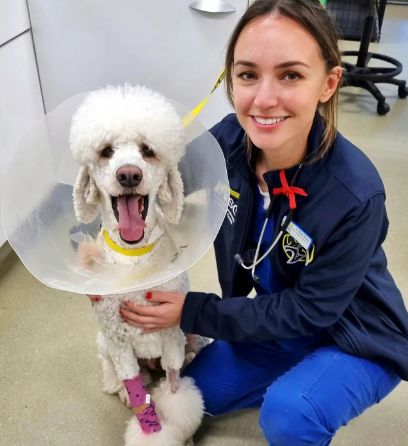
Dr. Kate Bruce is a highly experienced veterinarian with a Master’s degree in Veterinary Medicine and over a decade of expertise in animal behavior and holistic pet care. She combines traditional and modern practices to offer exceptional advice on pet health and wellness. Explore more at petsconsultancy.com and follow her on Instagram for expert tips.

